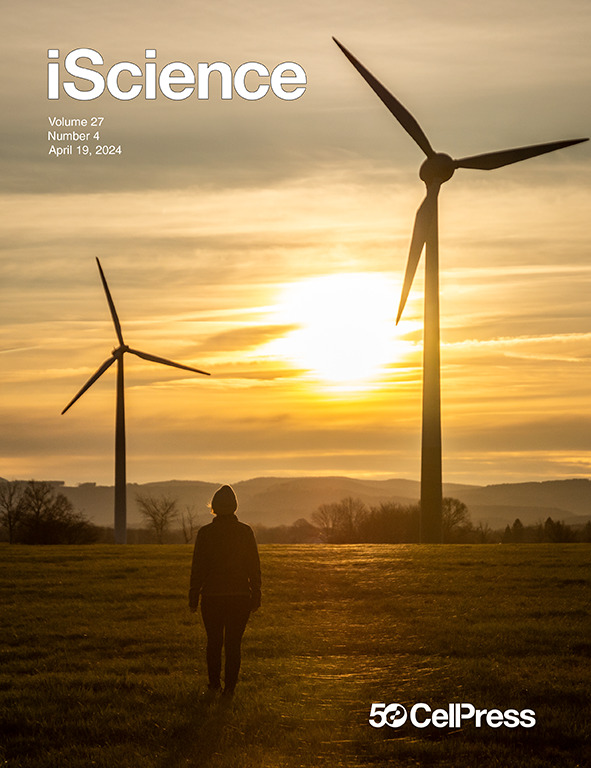Akkermansia muciniphila attenuates association between specific metal exposures during pregnancy and depressive symptoms in late childhood
IF 4.6
2区 综合性期刊
Q1 MULTIDISCIPLINARY SCIENCES
引用次数: 0
Abstract
Emerging research suggests that exposures to metals during pregnancy and consequent disruptions in gut microbiome (GM) are associated with depressive disorders in childhood. Akkermansia muciniphila, a GM bacteria, has been studied for its potential antidepressant effects. However, its role in influencing the association between prenatal metal exposures and depressive symptoms during childhood is unknown. Leveraging a well-characterized pediatric birth cohort and its microbiome substudy (n = 112), we investigated whether a certain subgroup of children at 9-11-year-of-age (characterized by a specific pattern of prenatal exposure to groups of metals or metal-clique) had worsened depressive symptoms and if the presence of A.muciniphila in GM modifies this association. A subgroup of children characterized by the prenatal metal-clique signature of zinc-chromium-cobalt had significantly increased depression scores; however, within that subgroup, children with A.muciniphila had much lower depression scores than those without A.muciniphila in the GM. Our analysis provides exploratory evidence hypothesizing A.muciniphila as an intervention attenuating the effect of prenatal metal-exposures-associated depressive disorders in late childhood.

Akkermansia muciniphila 可减轻孕期特定金属暴露与儿童后期抑郁症状之间的联系
新近的研究表明,孕期接触金属以及由此导致的肠道微生物组(GM)紊乱与儿童期抑郁障碍有关。Akkermansia muciniphila 是一种 GM 细菌,其潜在的抗抑郁作用已被研究过。然而,它在影响产前金属暴露与儿童期抑郁症状之间的关联方面所起的作用尚不清楚。我们利用一个特征明确的儿科出生队列及其微生物组子研究(n = 112),调查了9-11岁儿童中的某一亚群(其特征是产前暴露于一组金属或金属复合体的特定模式)的抑郁症状是否恶化,以及转基因中的粘液噬菌体是否会改变这种关联。以锌、铬、钴的产前金属簇特征为特征的儿童亚组的抑郁评分显著升高;然而,在该亚组中,与基因组中没有粘金蝇的儿童相比,含有粘金蝇的儿童的抑郁评分要低得多。我们的分析提供了探索性证据,假定粘菌甲可作为一种干预措施,减轻产前金属暴露对儿童后期抑郁障碍的影响。
本文章由计算机程序翻译,如有差异,请以英文原文为准。
求助全文
约1分钟内获得全文
求助全文
来源期刊

iScience
Multidisciplinary-Multidisciplinary
CiteScore
7.20
自引率
1.70%
发文量
1972
审稿时长
6 weeks
期刊介绍:
Science has many big remaining questions. To address them, we will need to work collaboratively and across disciplines. The goal of iScience is to help fuel that type of interdisciplinary thinking. iScience is a new open-access journal from Cell Press that provides a platform for original research in the life, physical, and earth sciences. The primary criterion for publication in iScience is a significant contribution to a relevant field combined with robust results and underlying methodology. The advances appearing in iScience include both fundamental and applied investigations across this interdisciplinary range of topic areas. To support transparency in scientific investigation, we are happy to consider replication studies and papers that describe negative results.
We know you want your work to be published quickly and to be widely visible within your community and beyond. With the strong international reputation of Cell Press behind it, publication in iScience will help your work garner the attention and recognition it merits. Like all Cell Press journals, iScience prioritizes rapid publication. Our editorial team pays special attention to high-quality author service and to efficient, clear-cut decisions based on the information available within the manuscript. iScience taps into the expertise across Cell Press journals and selected partners to inform our editorial decisions and help publish your science in a timely and seamless way.
 求助内容:
求助内容: 应助结果提醒方式:
应助结果提醒方式:


